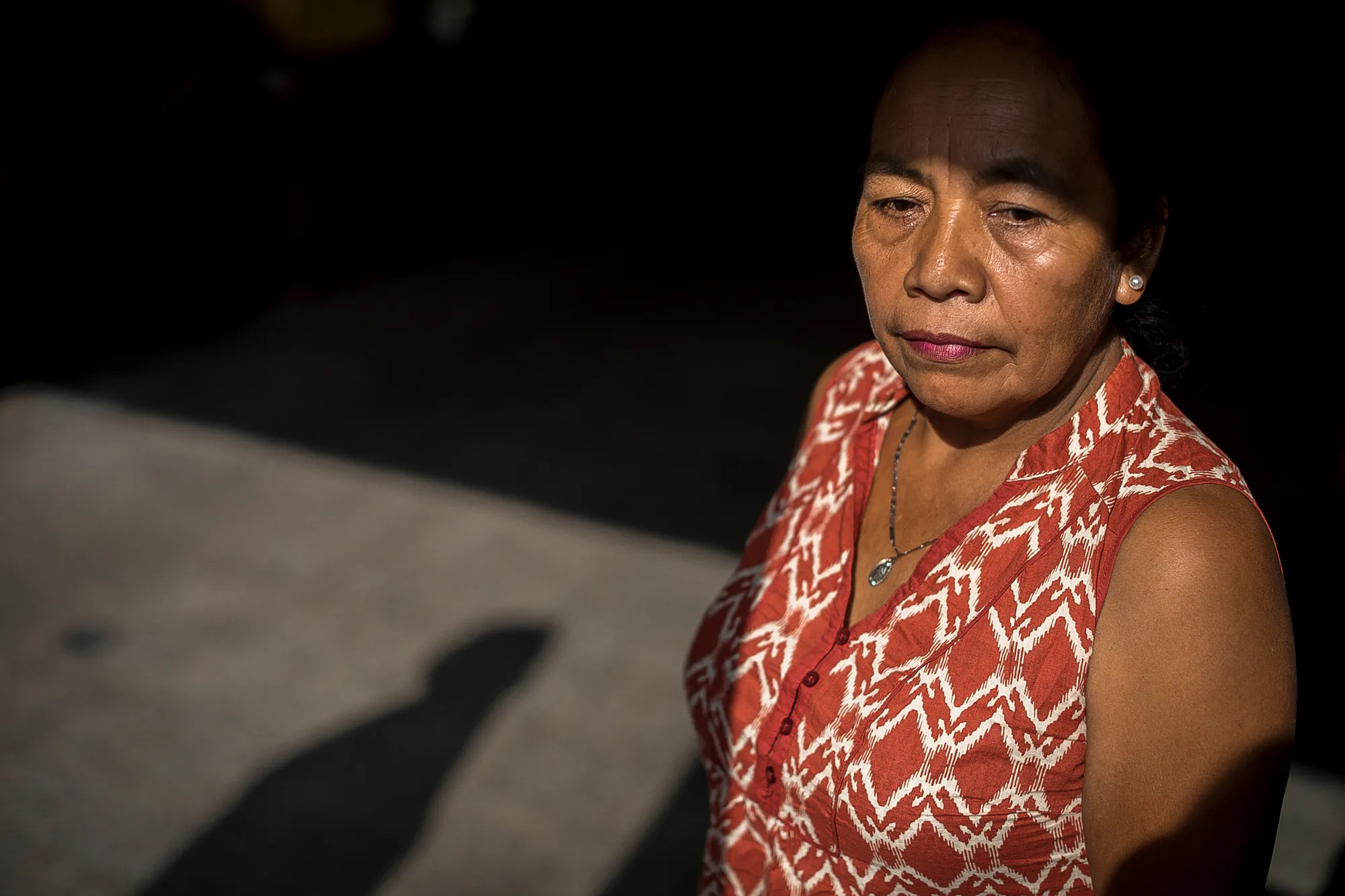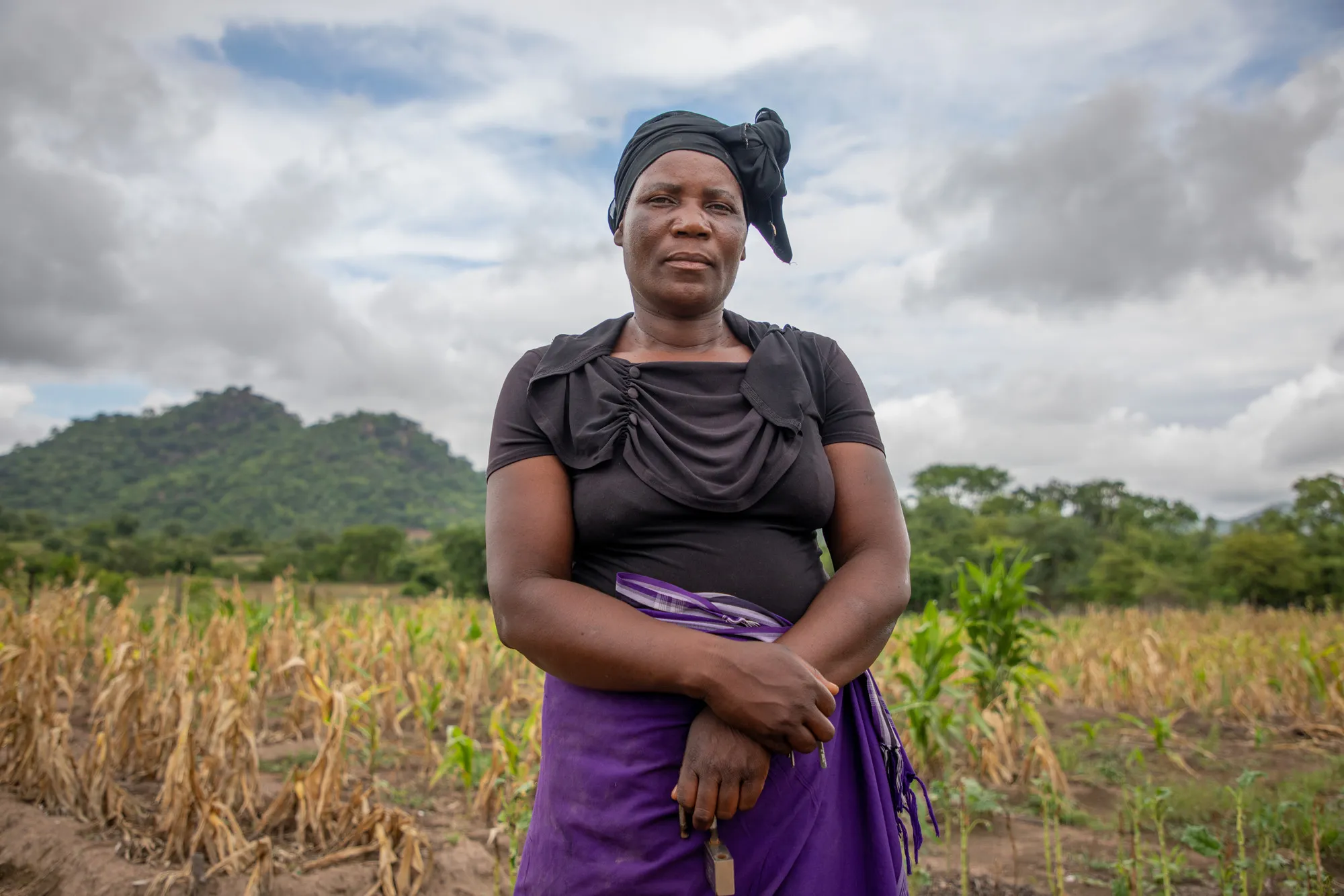Recommendations
What can we do?
CARE has published this ranking for the sixth time in a row. Some countries are “permanent guests” on the list of crises that receive the least attention worldwide. Is there a lack of money? Interest? Knowledge? Humanitarian needs are again at a record high in 2022, with 274 million people in need of immediate survival assistance, or one in 28 people worldwide. The pandemic poses major challenges for governments and administrations, but it also reveals global injustice: access to vaccines, hunger, poverty, inequality between women and men, violence against women and girls, and care for the sick, which primarily falls on women and girls.
We asked a range of people for their recommendations. Voices from politics, the aid sector, CARE partner organizations and women from crisis-affected regions, who often struggle to be heard. They all have their own views about what we can do to shine a light on the world’s forgotten crises.
Concessa Nizigiyimana – Gatumba, Burundi
“My name is Concessa. I’m 38 years old and I live in Gaharawe, Gatumba, which is in West Burundi, near the border of the Democratic Republic of the Congo.
I have been affected by two crises that occurred in Gatumba since 2020. First, the floods, due to heavy rains, caused people to leave their destroyed houses. We had to go to camps for displaced persons, where we suffered from the cold, hunger and dirt. Secondly, we were faced with the closure of borders due to the COVID-19 pandemic. Since my livelihood was to trade across the border, it became very hard for me to feed my family. My children fell constantly ill as they were exposed to malnutrition and the cold.
I think that such crises need to be reported more broadly, both in my own country and abroad. When communities are able to tell what they are experiencing, we can work together with local authorities to ease the situation. CARE Burundi helped us quickly with an emergency response at the time. I also think that women and girls need to be heard much more. Their needs in a crisis may be different from men and boys.
Another way to ensure these crises are reported is the organization of a competition of innovative solution ideas, such as a ‘Hackathon,’ in order to contribute to the improvement of women’s health. This competition was a good measure for mobilisation, community awareness and decision makers. The competition targeted female members of the Village Savings and Loans Association (VSLA) and local social entrepreneurs. I believe that if the media works closely with the organizations, it will help raise effective awareness and engagement in the community, and therefore receive the needed support.”
Bernardina Cobox – Quetzaltenango, Guatemala – Project Transform Yourself, Women Free of Violence
“Generally, people talk about the violence that women suffer, but they don’t know how to listen to us and we don’t talk about it ourselves. We are afraid to be in the news, to be talked about and to have others tell us what we go through, because it is distorted and makes us the centre of ridicule and accusations. The news is manipulated, so we need conscientious allies who know how important it is for us to tell our own story, to call things by their name and to have spaces of solidarity.
Sometimes we want to cover the sun with a finger (hide the situation) and so does society. It is a power struggle, in which they continue to control what to say, because they are patriarchal and do not want to be found out. We live these crises every day, but they pass them off as something normal to the point that nobody talks about it anymore.
We could make so much noise that they will have to listen to us, they will pay attention to us and we will emerge from the silence.”
Omar Bizo – Niger – Manager of a local NGO: ADL – Appui au Développement Local (Support to Local Development)
“The decrease in budgets, the drop in advertising revenues and the reduced network of correspondents around the world have caused a void in the media coverage of crises. During a disaster, the media is more sensitive to the number of deaths than to the analysis and presentation of the underlying causes of the event.
The number of people in emergency situations will increase in the years to come and we cannot prioritize their suffering according to the number of deaths. For a media outlet to commit to devoting a certain percentage of airtime or space to covering these forgotten humanitarian crises would be an example of positive change.
This can also be done by sending a reporter each year to cover a forgotten crisis, by organizing a roundtable on a forgotten crisis that will be broadcast in the media, or by providing support in terms of skills or money to local journalists and media that are sometimes very poor.
NGOs try to compensate for the withdrawal of journalists from the field by proposing new content or by organizing press visits to condemn these humanitarian crises.
Young people are more and more concerned about the climate and humanitarian crises. They demand complete and reliable information but also more testimonies from the people directly concerned, via the media they use. They also want testimonies that bring hope and solutions, which is certainly not always possible, but requires trying to vary the angles of reporting.
We saw last year how a Swedish teenager turned a simple climate protest into a global movement of millions. With the rise of citizen journalism and people around the world taking to the streets to make their voices heard, there is no longer any doubt: every voice, every gesture counts and can help launch or strengthen a movement towards a more just and united world.
It is also up to us, actors of development from the global South, to let our colleagues in the field speak for us, who are often less solicited by the media but whose authenticity is a guarantee of credibility.”
Sofía Sprechmann Sineiro – Secretary General of CARE International
“This report holds a stark mirror up to the complex world we are all currently experiencing. Be it the immediate threat of the COVID-19 pandemic, the worsening climate crisis, or rising social injustice playing out across the world; audiences everywhere are experiencing high levels of stress and fatigue from an overwhelming and often very frightening news agenda. Add to this the ongoing battle with misinformation, fake news and harmful online behaviours, it is perhaps not surprising that many are simply switching off from bad news.
So how can we encourage audiences and, in turn, the media cycle, to pay attention to neglected humanitarian crises such as those highlighted in this report?
At CARE, we believe in championing locally-led solutions. We have a long history of working hand-in-hand with communities and civil society to support and scale workable interventions to poverty and hardship. We also believe in the power of sharing the stories of resilience and innovation that we come across in our work every day, particularly as media institutions and humanitarian organizations alike receive less and less funding. Engaging audiences globally with the realities of life across different seas and borders inspires solidarity and action. And never has this been more important or so easy to do. Thanks to mobile phones and ever-improving internet access, we are able to connect journalists, audiences and our supporters directly with the stories – and the storytellers – that matter most.
It is hard to not to be inspired and uplifted by the storytellers featured in this report; 16-year-old Litness in Malawi, or Raquel Vasquez, the climate champion in Guatemala, both making positive change happen in their communities despite the challenges of their daily lives. These are the stories of resilience, hope and opportunity that shine a light along the path towards a brighter future for us all. It’s time more of the world heard them.”
Janez Lenarčič – European Commissioner for Crisis Management at the European Commission
“Today, humanitarian needs stand at an all-time high, driven largely by the resurgence of state-based conflicts, combined with the impacts of climate change, environmental degradation, global population growth and failed governance. Yet, the gap between humanitarian needs and the resources available globally is steadily and sharply increasing.
The average humanitarian crisis now lasts more than 9 years, and many last considerably longer. As a result, too many crises have become ‘forgotten’ – marked by limited donor response, overall funding shortages, and a low level of media attention.
In this context, and as the world’s leading humanitarian donor, the European Union is at the forefront of intervening in crises that are not sufficiently in the spotlight. This is an important demonstration of EU solidarity and an important part of our global commitment and responsibility to supporting people in need, wherever they are.
For many years, the EU’s Forgotten Crisis Assessment has enabled us to monitor under-reported crises. This evidence-based tool relies principally on information from the INFORM indexes, the Europe Media Monitor Tool, as well as input from field experts.
Our 2021-2022 assessment includes 16 crises: from the internal armed conflict in Colombia, to the Sahrawi refugee crisis in Algeria, from the clashes in Mindanao, to the conflict in Ukraine. The EU is working hard on all these fronts with a commitment to devote at least 15 percent of its humanitarian budget to tackle forgotten crises.
The European Union, as well as other donors, have a shared responsibility to watch out for forgotten crises.’ Beyond funding, the EU has systematically engaged in advocacy and in drawing international and media attention to these crises. By maintaining our global presence, voice and support, we will continue to provide principled humanitarian assistance to people in need, ensuring their plight will not be forgotten.”












